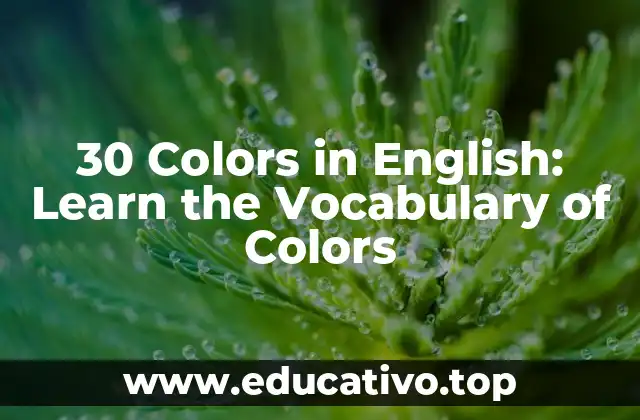Introduction to Butterfly in English
Butterflies are one of the most fascinating and beautiful creatures in the natural world. With over 20,000 known species, they can be found in almost every corner of the globe, from the tropical rainforests to the backyard gardens. However, when it comes to describing these delicate creatures in English, many non-native speakers may struggle to find the right words. In this article, we will delve into the world of butterflies and explore the English vocabulary related to these magnificent insects.
Types of Butterflies in English
Butterflies come in various shapes, sizes, and colors, each with its unique characteristics and features. In English, there are several ways to categorize and describe different types of butterflies. Some of the most common types include:
- Monarch butterfly (Danaus plexippus)
- Red Admiral (Vanessa atalanta)
- Painted Lady (Vanessa cardui)
- Swallowtail (Papilio spp.)
- Sulphur butterfly (Colias spp.)
What is the Life Cycle of a Butterfly in English?
The life cycle of a butterfly consists of four stages: egg, larva, pupa, and adult. Each stage has its own unique characteristics and features. In English, these stages can be described as follows:
- Egg stage: The female butterfly lays eggs on a leaf or stem.
- Larval stage: The caterpillar hatches from the egg and eats constantly to grow and develop.
- Pupal stage: The caterpillar transforms into a chrysalis or pupa, where it undergoes a dramatic transformation.
- Adult stage: The adult butterfly emerges from the chrysalis, its wings still soft and folded.
How Do Butterflies Fly in English?
Butterflies are able to fly due to their unique physical characteristics, including their wings, body structure, and muscles. In English, the process of flying can be described as follows:
- Wing movement: Butterflies flap their wings up to 200 times per second to generate lift and thrust.
- Aerodynamics: The shape and structure of the wings create a difference in air pressure above and below the wing, generating lift.
- Muscle power: The muscles in the butterfly’s thorax contract and relax to flap the wings.
What Do Butterflies Eat in English?
Butterflies feed on a variety of substances, including nectar, pollen, and sugary liquids. In English, their diet can be described as follows:
- Nectar: Butterflies feed on the sweet, energy-rich liquid found in flowers.
- Pollen: Some butterflies, such as the monarch, feed on pollen to obtain protein and other nutrients.
- Sugary liquids: Butterflies may also feed on sugary liquids, such as fruit juice or tree sap.
How Do Butterflies Communicate in English?
Butterflies communicate in various ways, including through visual, chemical, and vibrational signals. In English, their communication methods can be described as follows:
- Visual signals: Butterflies use visual cues, such as color and pattern, to communicate with other butterflies.
- Chemical signals: Butterflies release pheromones to attract mates or warn off predators.
- Vibrational signals: Some butterflies use vibrations to communicate with other butterflies or even with plants.
What is the Importance of Butterflies in Ecosystems in English?
Butterflies play a crucial role in ecosystems, serving as pollinators, seed dispersers, and food sources for other animals. In English, their importance can be described as follows:
- Pollination: Butterflies help pollinate flowers, allowing them to reproduce.
- Seed dispersal: Butterflies help disperse seeds, allowing plants to spread and colonize new areas.
- Food source: Butterflies are an important food source for other animals, such as birds, bats, and spiders.
How Do Humans Impact Butterfly Populations in English?
Human activities, such as habitat destruction, pesticide use, and climate change, have a significant impact on butterfly populations. In English, the effects of human activities can be described as follows:
- Habitat destruction: Human activities, such as deforestation and urbanization, destroy butterfly habitats.
- Pesticide use: Pesticides can kill butterflies directly or contaminate their food sources.
- Climate change: Climate change alters the distribution and abundance of butterfly species.
Can Butterflies Be Kept as Pets in English?
While butterflies are not typically kept as pets, some species can be raised in captivity for educational or conservation purposes. In English, the process of raising butterflies can be described as follows:
- Breeding: Butterflies are bred in controlled environments to produce eggs or caterpillars.
- Rearing: Caterpillars are fed and cared for until they pupate and emerge as adult butterflies.
How Can We Help Conserve Butterfly Populations in English?
Conserving butterfly populations requires a multi-faceted approach that involves habitat preservation, species protection, and education. In English, conservation efforts can be described as follows:
- Habitat preservation: Protecting and restoring habitats, such as meadows and forests, to preserve butterfly populations.
- Species protection: Protecting specific butterfly species and their habitats from threats, such as habitat destruction and pesticide use.
- Education: Educating the public about the importance of butterfly conservation and the actions they can take to help.
What are Some Interesting Facts About Butterflies in English?
Butterflies have many fascinating features and behaviors that make them unique and captivating. In English, some interesting facts about butterflies include:
- Butterfly wings are made up of tiny scales that refract light, giving them their color and shine.
- Butterflies taste with their feet, using tiny sensors to detect sweetness or bitterness.
- Some butterflies migrate thousands of miles each year, crossing entire continents.
How Do Butterflies Adapt to Their Environments in English?
Butterflies have evolved a range of adaptations to survive and thrive in their environments. In English, these adaptations can be described as follows:
- Camouflage: Butterflies use coloration and pattern to blend in with their surroundings.
- Mimicry: Some butterflies mimic the appearance or behavior of other animals, such as bees or wasps, to avoid predators.
- Thermoregulation: Butterflies regulate their body temperature to conserve energy and survive in extreme temperatures.
Can Butterflies Be Used in Therapy or Education in English?
Butterflies can be used in therapy and education to teach important concepts, such as life cycles, adaptation, and conservation. In English, the use of butterflies in therapy and education can be described as follows:
- Life cycles: Butterflies are used to teach students about the life cycle of living organisms.
- Adaptation: Butterflies are used to teach students about adaptation and the importance of conservation.
- Emotional therapy: Butterflies are used in therapy to help individuals cope with anxiety, depression, and other emotional issues.
How Do Butterflies Impact Human Culture in English?
Butterflies have had a significant impact on human culture, inspiring art, literature, and symbolism. In English, the impact of butterflies on human culture can be described as follows:
- Art and literature: Butterflies have inspired countless works of art, literature, and poetry.
- Symbolism: Butterflies are often used as symbols of transformation, hope, and beauty.
- Folklore: Butterflies have been featured in folklore and mythology from around the world.
What is the Future of Butterfly Conservation in English?
The future of butterfly conservation is uncertain, with many species facing threats from habitat destruction, pesticide use, and climate change. In English, the future of butterfly conservation can be described as follows:
- Habitat preservation: Protecting and restoring habitats will be crucial to preserving butterfly populations.
- Species protection: Protecting specific butterfly species and their habitats will be essential to conservation efforts.
- Community engagement: Engaging local communities in conservation efforts will be vital to the success of butterfly conservation.
How Can We Learn More About Butterflies in English?
There are many ways to learn more about butterflies, including reading books, watching documentaries, and participating in citizen science projects. In English, resources for learning more about butterflies include:
- Books: There are many books available on butterflies, covering topics such as biology, ecology, and conservation.
- Documentaries: Documentaries and nature programs often feature butterflies and their habitats.
- Citizen science: Participating in citizen science projects, such as butterfly counts and monitoring programs, can provide valuable insights into butterfly biology and ecology.
Isabela es una escritora de viajes y entusiasta de las culturas del mundo. Aunque escribe sobre destinos, su enfoque principal es la comida, compartiendo historias culinarias y recetas auténticas que descubre en sus exploraciones.
INDICE









